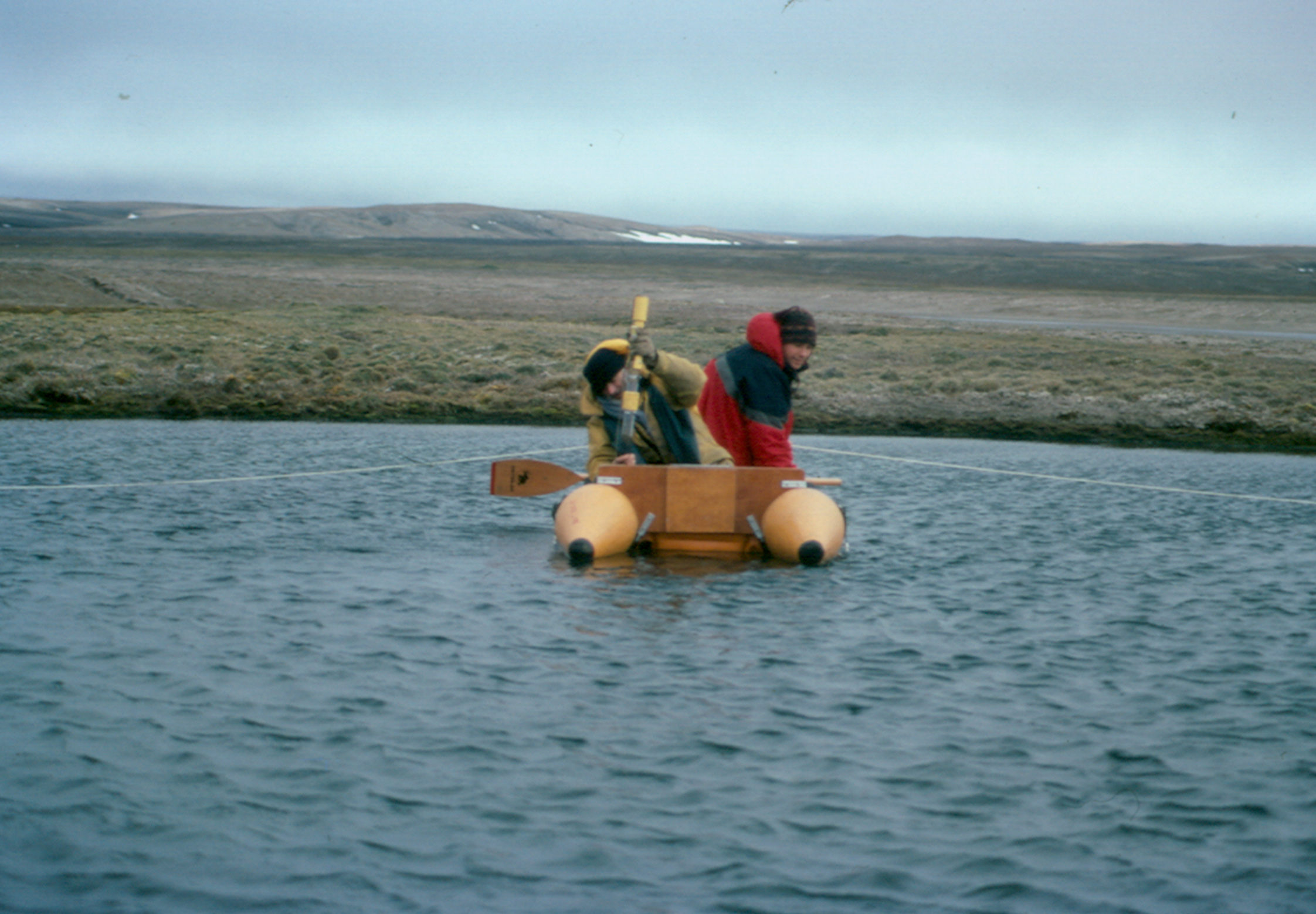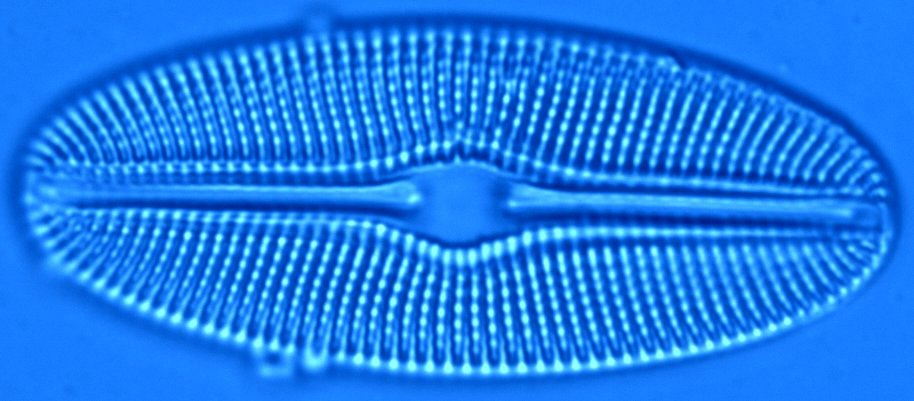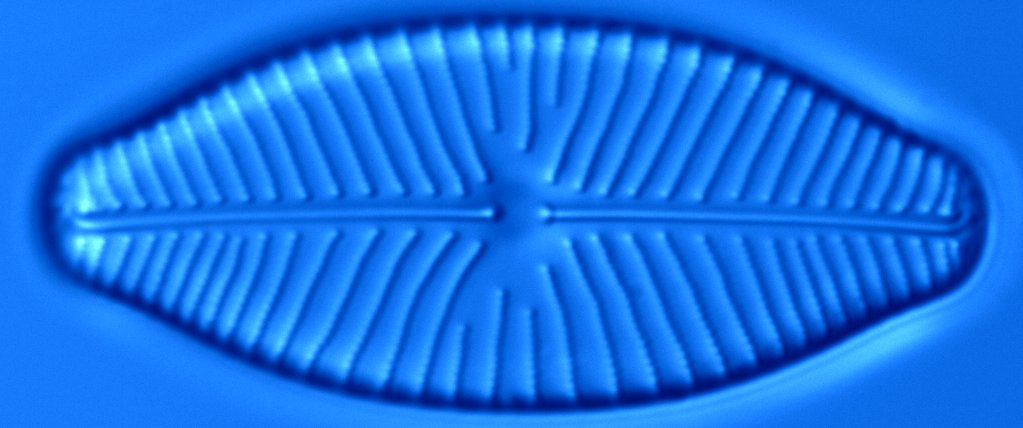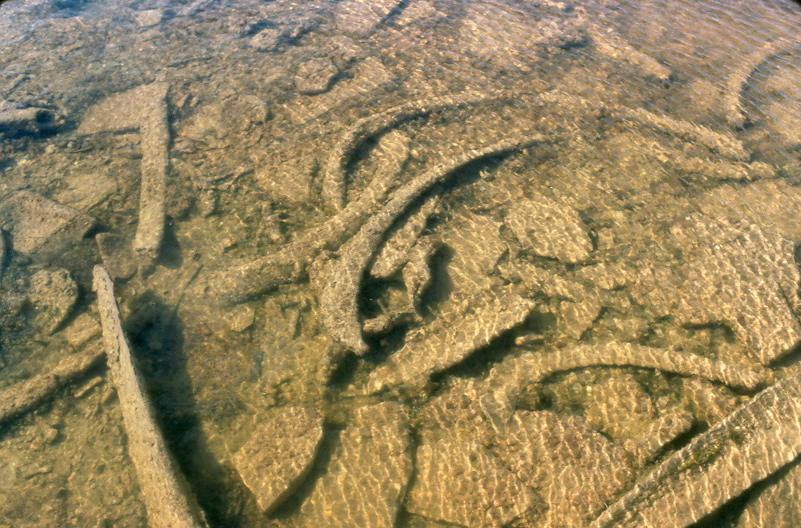
 Diatoms: microscopic algae as environmental indicators
Diatoms: microscopic algae as environmental indicators
These are three highly magnified images of freshwater diatom
microfossils. These siliceous (or glass-walled) algae are abundant
and diverse components of the biota of most lakes, ponds, and rivers.
As their cell walls are made of silica (or glass), they preserve
well in lake sediments. Different species are characteristic of
different types of environments and the abundance of different species
in the lake sediments can be used to determine past environmental conditions.
By looking at many layers of lake sediments (the slices from a
core) environmental changes over time can be determined.
The diatom at left is a Cyclotella sp. Photo :
K.M. Ruhland
 This diatom is a Diploneis
sp.
Photo :
K.M. Ruhland
This diatom is a Diploneis
sp.
Photo :
K.M. Ruhland
 This diatom is a Navicula
sp. Photo:
K.M. Ruhland
This diatom is a Navicula
sp. Photo:
K.M. Ruhland
 This photograph is
of a Thule overwintering site, as reconstructed by the
Canadian Museum of Civilization. It is situated at Resolute
Bay, Cornwallis Island, Nunavut, which is north of the Somerset
Island site described in this paper. (Photo by: J.P. Smol)
This photograph is
of a Thule overwintering site, as reconstructed by the
Canadian Museum of Civilization. It is situated at Resolute
Bay, Cornwallis Island, Nunavut, which is north of the Somerset
Island site described in this paper. (Photo by: J.P. Smol)
 Whale bones under water.
Whale bones under water.
Photo: J.P. Smol

Unexcavated
Thule whale bone dwelling, Bathurst Island, which is
north of the site described in this paper. Dwelling roof support of
whale bones has collapsed. Allen P. McCartney provides scale.
(Photo by J.M. Savelle)

Excavated
Thule whale bone dwelling at PaJs-13, Hazard Inlet, Somerset
Island, showing abundant whale bone used in original dwelling
construction. Cored pond is at upper left of photograph. (Photo
by: Junko Habu)
Related Links
Thule Culture
(at Archeological
Survey of Canada
)
Marianne
S.V. Douglas
,
Canadian
Circumpolar Institute
John
P. Smol
, Queen's University - web link
James
M. Savelle
, McGill University -
web link
Jules M. Blais
, University of Ottawa -
web link

|